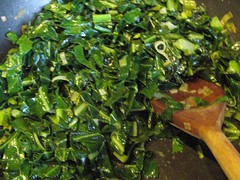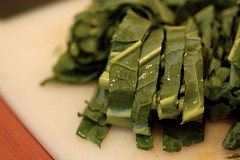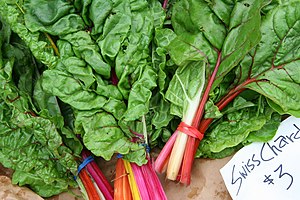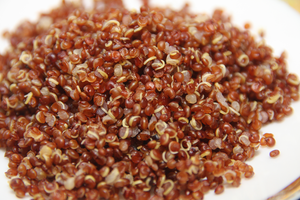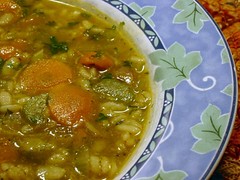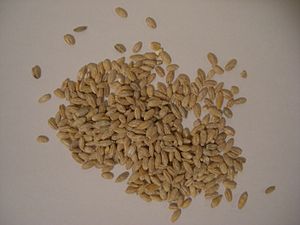 Image via WikipediaFar too often we get caught up in the necessity of cooking in order to eat, and forget the absolute joy that can be found through the act of cooking. Of course this isn't limited to stovetop cooking. There are many men and women around the world who find baking to be an extremely pleasurable pastime in addition to traditional stovetop cooking or even barbecuing on a grill. The main distinction occurs in how you perceive your cooking projects.
Image via WikipediaFar too often we get caught up in the necessity of cooking in order to eat, and forget the absolute joy that can be found through the act of cooking. Of course this isn't limited to stovetop cooking. There are many men and women around the world who find baking to be an extremely pleasurable pastime in addition to traditional stovetop cooking or even barbecuing on a grill. The main distinction occurs in how you perceive your cooking projects.How Do Your View Cooking?
While this question is asked somewhat rhetorically, it is a question you should ask yourself, and consider the answer. Do you view cooking as a chore or duty or do you view it as a project? There is something much more exciting about embarking on a new project than getting around to a loathsome chore. If you do view cooking as a chore the more important question might be why?
Some common reasons that people dislike cooking include the following: lack of skill, lack of confidence, boredom, or you could simply dislike the inevitable clean up far more than you enjoy the process of cooking. For each of these, there are solutions if you are willing to make the effort.
A lack of skill when it comes to cooking can be easily corrected in most cases by taking a few cooking classes. Classes are offered for varying degrees of skill sets and are meant to help you develop your cooking talents while teaching you the basics of meal planning and preparation. You can increase your skills by taking more classes down the road.
While a lack of confidence is a little more difficult to address, having a few 'dinner parties' in which your guests can compliment your culinary talents can often solve this particular dilemma. The key in this process is to plan your menu carefully and remain well within your comfort zone. You will be amazed at the wonderfully rich and delicious meals that can be prepared with very little effort if you are willing to sift through the recipe books in order to find them. (And of course keep an eye on this blog, and our Cooking From Scratch web page for fun recipes and more great cooking resources!)
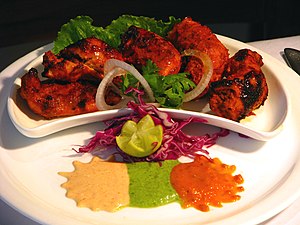 Image via WikipediaBoredom in the kitchen is perhaps one of the easiest problems to fix there is. The solution is exceedingly simple: find a challenge. Try cooking Thai or Indian cuisine. Try more difficult recipes. Try making only meals from scratch (our preference!) or simply try broadening your use of spices and seasonings. There are many things you can do in order to bring some excitement back into your kitchen. You may even discover hidden talents and tastes in the process.
Image via WikipediaBoredom in the kitchen is perhaps one of the easiest problems to fix there is. The solution is exceedingly simple: find a challenge. Try cooking Thai or Indian cuisine. Try more difficult recipes. Try making only meals from scratch (our preference!) or simply try broadening your use of spices and seasonings. There are many things you can do in order to bring some excitement back into your kitchen. You may even discover hidden talents and tastes in the process.There will always be clean up. My suggestion is to make a deal with either your partner or your children and they can draw straws over who cleans up. Of course if this won't work in your family, you could always turn over a new leaf and clean as you go whenever possible. This is what I usually do, and in fact, by the time the meal is ready, I typically only have my eating dishes and utensils, and a cooking pot or two to clean after dinner and putting away leftovers. This makes the clean up process after dinner so much simpler to handle that it is well worth a few extra minutes during meal prep.
Cooking for pleasure is really the most satisfying and fun way to cook. If you have difficulties when it comes to finding the enjoyment and entertainment value of cooking, perhaps it's time you bring some fun back into your kitchen. If you're barbecuing, put on some Jimmy Buffet and dance around your kitchen. If you're cooking Italian find some nice Italian music to set the mood, and grab a glass of red wine to sip during the process. Bring the fun back into your kitchen and you will find that cooking is a pleasure rather than a chore!
To see why I love cooking from scratch so much, visit http://www.newholisticliving.com/cookingfromscratch.html.

